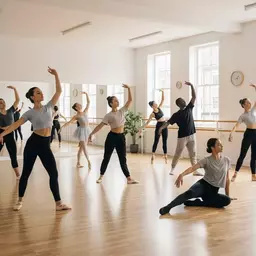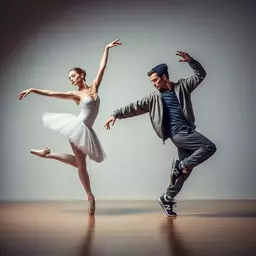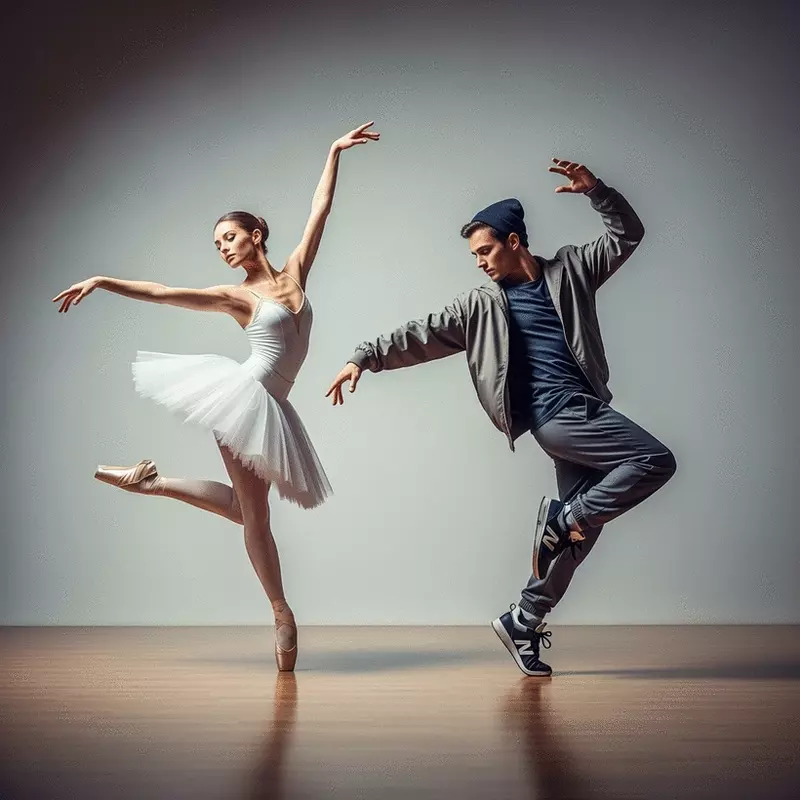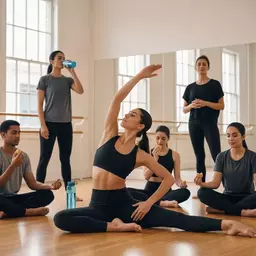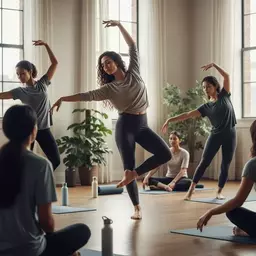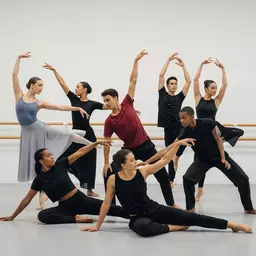Mastering Diverse Dance Styles

What if mastering multiple dance styles could transform not only your technique but also your artistic expression? Understanding the foundational elements of dance can open new avenues for creativity and performance.
What You Will Learn
- The importance of foundational techniques like alignment, core strength, flexibility, and musicality across all dance genres.
- Key differences between ballet and street dance techniques, emphasizing the unique stylistic choices in each.
- How contemporary, jazz, and hip hop styles contribute to a dancer's versatility and creative expression.
- Strategies for blending techniques from various genres to enhance your choreography and performance.
- The value of engaging with dance communities and resources to further your growth and understanding of different styles.
Comparing Dance Technique Elements by Genre
This visual highlights the key technical elements emphasized in Ballet versus Street Dance, offering a side-by-side comparison of their core approaches to movement and expression. To delve deeper into diverse dance forms, explore Australia's Dance Styles Explained.
Ballet Techniques
- 🩰 Proper Alignment
- 💪 Core Strength
- 🤸♀️ Turnout for Lines
- 🎶 Musicality
Street Dance Techniques
- 🕺 Parallel Feet
- ✨ Individuality & Groove
- ⚡ Dynamic Movement
- 🎵 Musical Phrasing
Understanding the Foundations of Dance Technique
As a passionate dancer and educator, I've come to appreciate the foundational principles that underpin all forms of dance. Whether you’re gliding through a ballet class or hitting the streets with hip hop, certain elements like alignment, core strength, flexibility, and musicality are vital. These fundamentals not only enhance your performance but also help you express yourself more fully in every genre!
Key Elements of Dance Technique Across Genres
When we talk about dance technique, several key elements stand out across genres. Each element plays a crucial role in how you approach movement:
- Alignment: Proper alignment helps maintain balance and prevents injuries.
- Core Strength: A strong core supports better control and stability in every movement.
- Flexibility: Increased flexibility allows for a wider range of motion, enhancing techniques in both ballet and street dance.
- Musicality: Understanding rhythm and musical phrasing is essential for connecting with your audience.
As you delve into different dance genres, remember that these elements are your building blocks. Mastering them will not only refine your technique but also elevate your artistry!
Comparing Ballet and Street Dance Techniques
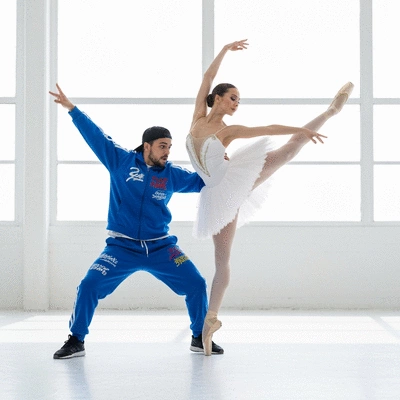
While ballet and street dance may seem worlds apart, they each have their own unique stylistic choices. For instance, in ballet, dancers often use turnout to enhance their lines and create aesthetically pleasing shapes. In contrast, street dance typically utilizes parallel feet to express individuality and groove.
This difference in technique affects not only the way movement is executed but also how it feels. Understanding these stylistic choices is essential for any dancer looking to switch between genres. Embracing the nuances can significantly impact your overall performance! For more on specific street dance styles, check out Afrobeats and Amapiano Explained.
Exploring Other Dance Styles: Contemporary, Jazz, and More
It’s important to recognize that dance is a vibrant tapestry woven from various styles, including contemporary and jazz. Each of these genres brings its own characteristics:
- Contemporary: Combines elements of several dance styles, focusing on floor work and fluid movement.
- Jazz: Emphasizes rhythm and expression, often incorporating improvisation.
- Hip Hop: Rooted in street dance, it focuses on personal style and cultural expression.
Understanding how these styles relate to ballet and street dance can expand your versatility as a dancer. By blending techniques from different genres, you can create a more dynamic performance. At Move District, we celebrate this rich diversity and encourage dancers to explore all avenues of movement!
Pro Tip
Did you know? Incorporating elements from various dance styles into your practice not only enhances your versatility but also fosters creativity. Try combining a ballet plié with hip hop grooves during your warm-up to explore new movement pathways!
Key Takeaways on Mastering Multiple Dance Genres
As we wrap up our exploration of dance technique, it’s essential to remember the key concepts that can guide you through mastering various genres. Understanding the technical aspects of alignment, core strength, and musicality is crucial in both ballet and street dance. These principles lay the groundwork for any dancer, enabling them to express themselves through movement effectively.
Moreover, embracing a mindset that values adaptability can significantly enhance your journey. Transitioning between styles requires not just physical adjustments but also a willingness to explore new expressions and techniques. So, let’s recap some vital insights:
- Recognize the importance of foundational techniques across genres
- Be open to the psychological shifts that come with genre transitions
- Incorporate ballet techniques into street dance to enrich your movement vocabulary
- Utilize drills to blend techniques seamlessly for choreography
Frequently Asked Questions (FAQs)
What are the foundational techniques common to all dance genres?
Foundational techniques common to all dance genres include proper alignment, core strength, flexibility, and musicality. These elements are crucial for enhancing performance and preventing injuries, regardless of the specific style.
How do ballet and street dance techniques differ?
Ballet techniques often emphasize turnout for aesthetic lines and shapes, while street dance typically uses parallel feet to express individuality and groove. These stylistic choices affect both the execution and feel of the movement.
What other dance styles are mentioned, and how do they contribute to a dancer's versatility?
Other dance styles mentioned include Contemporary, Jazz, and Hip Hop. Contemporary focuses on floor work and fluid movement, Jazz emphasizes rhythm and improvisation, and Hip Hop is rooted in personal style and cultural expression. Exploring these styles expands a dancer's versatility and allows for more dynamic performances.
Why is adaptability important for dancers exploring multiple genres?
Adaptability is crucial because transitioning between styles requires not only physical adjustments but also a willingness to explore new expressions and techniques. It enhances a dancer's journey and helps them to blend techniques seamlessly.
How can dancers further their growth and understanding of different dance styles?
Dancers can further their growth by engaging with dance communities and resources such as online tutorials, local mixed-genre classes, workshops focused on choreography blending, and social media groups. These resources provide valuable insights and connect dancers with like-minded individuals.
Getting Started with Your Dance Journey
With these insights in mind, I encourage you to take the plunge and explore your dance journey! Start by applying the techniques and tips we discussed, no matter your current skill level. Every dancer has a unique path, and sharing your experiences can foster community and growth. Have you tried blending ballet with street dance yet? I’d love to hear your thoughts and questions in the comments! Let’s create a dialogue that inspires and uplifts our vibrant dance community.
Explore Further Resources and Community Support
To further enhance your journey in mastering multiple dance genres, I recommend tapping into additional resources. From online tutorials to local classes, there’s a wealth of knowledge out there that can support your growth. Here are some great ways to continue learning:
- Online dance tutorials for specific styles
- Local dance studios offering mixed-genre classes
- Workshops focused on choreography blending
- Social media groups dedicated to dance discussions
Engaging with these resources not only provides valuable insights but also connects you with fellow dancers who share your passion. Remember, at Move District, we are committed to nurturing creativity and self-expression within Australia’s dance community, so let’s keep the conversation going!
Connecting with Dance Communities and Workshops

Joining dance communities and participating in workshops can significantly enrich your experience and knowledge. Surrounding yourself with like-minded individuals fosters a supportive environment where you can learn and grow together. Look out for local events or even online workshops that focus on genre blending. They often offer a chance to refine your techniques and gain feedback from experienced instructors. You can also find opportunities through various dance classes and workshops across Australia.
Have you found a dance community that inspires you? Let’s make sure we connect these dots and keep our passion for dance alive and thriving!
Recap of Key Points
Here is a quick recap of the important points discussed in the article:
- Master foundational techniques of alignment, core strength, flexibility, and musicality across all dance genres.
- Recognize the stylistic differences between ballet and street dance to enhance your versatility.
- Explore diverse dance styles like contemporary and jazz to enrich your movement vocabulary.
- Adopt a mindset of adaptability to smoothly transition between various dance genres.
- Engage with community resources, such as online tutorials and local classes, to continue learning and growing.

